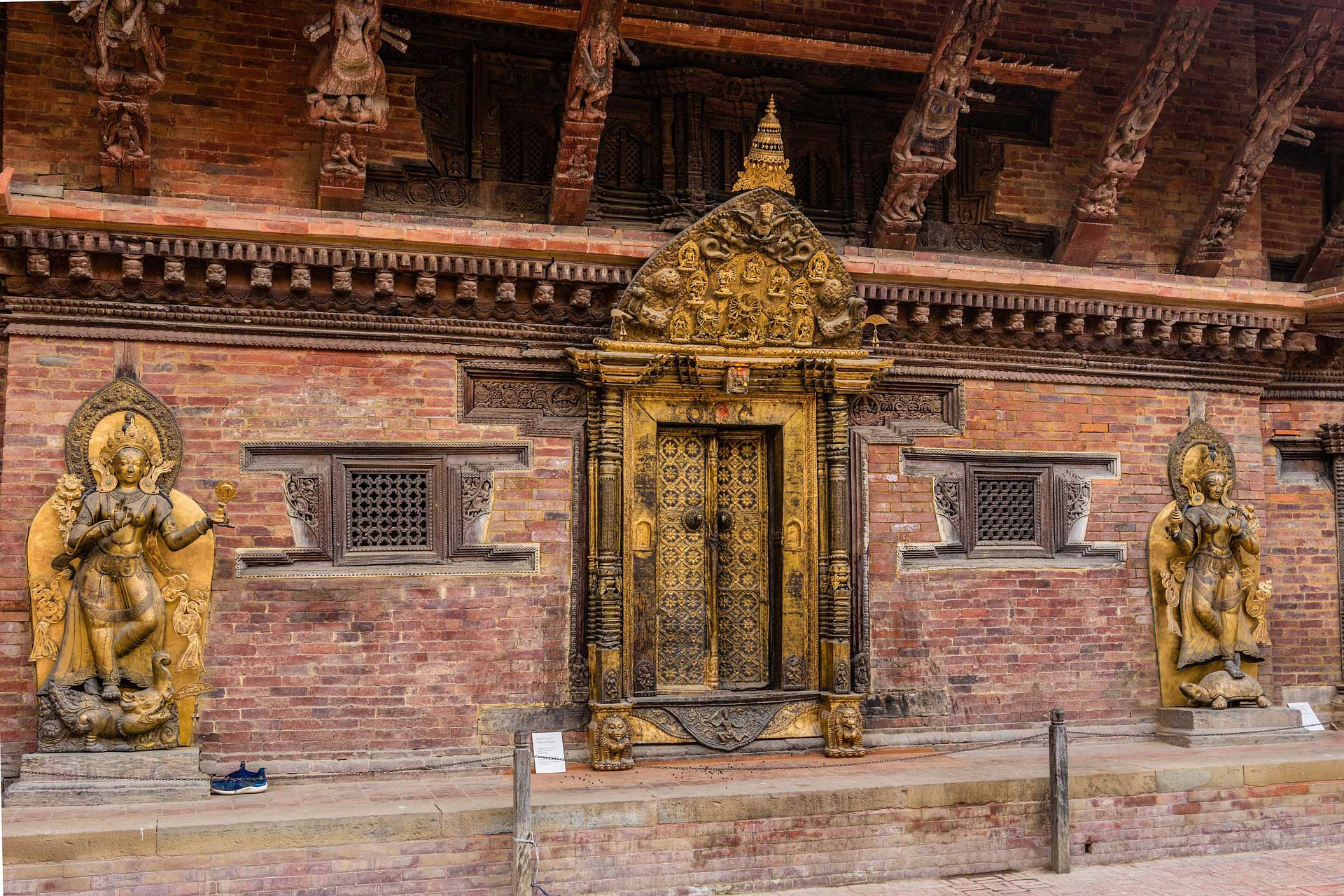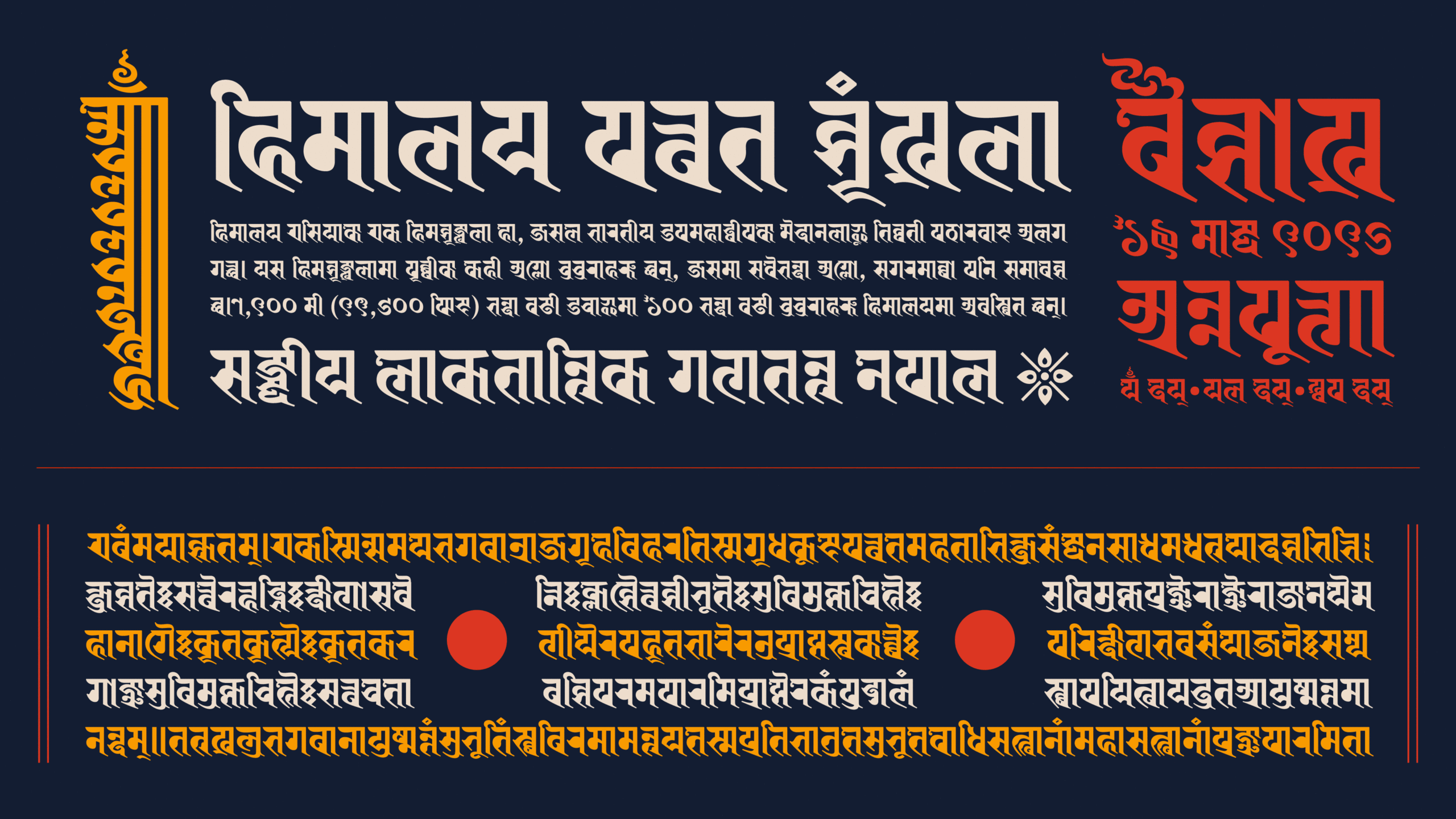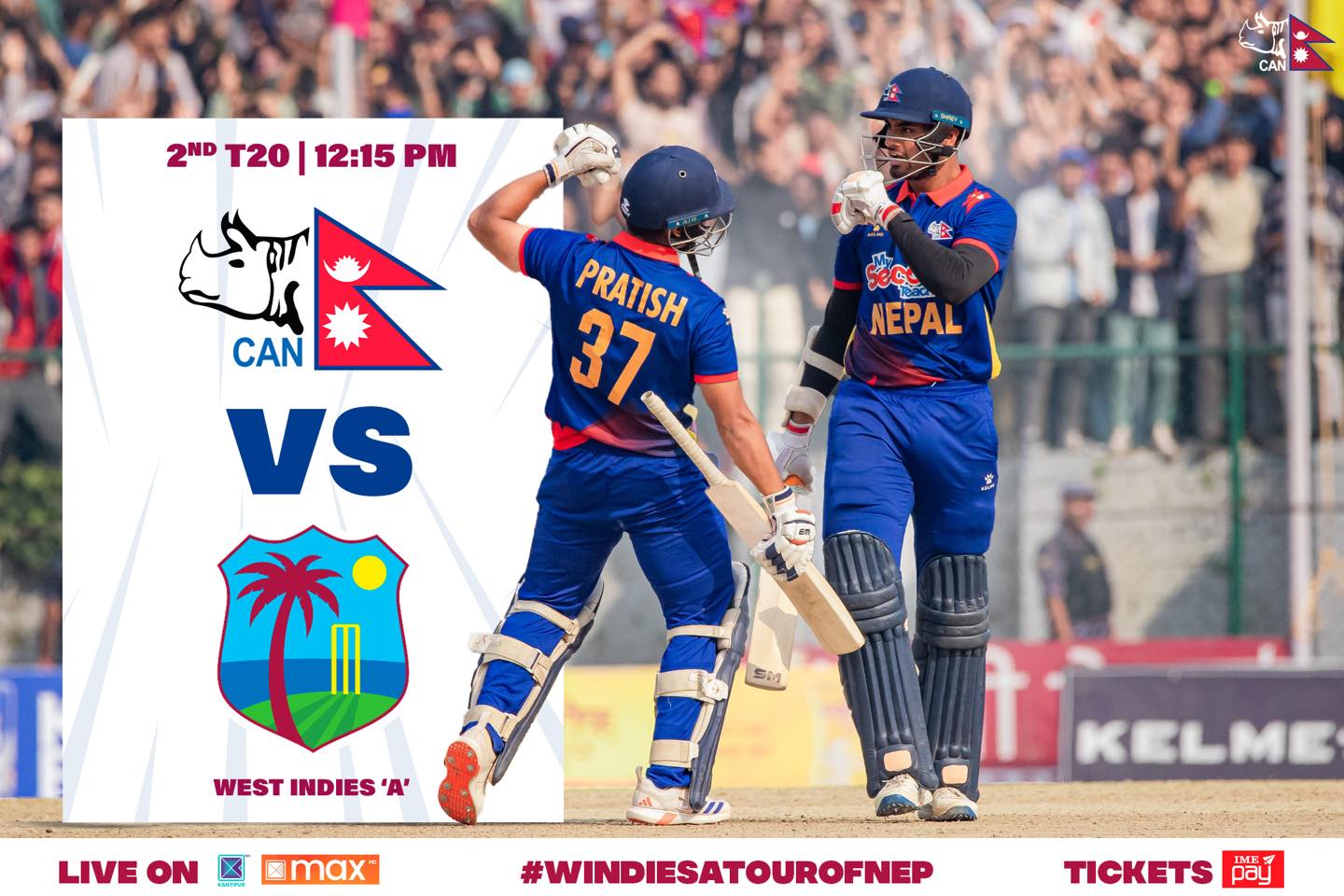Discovering the Beauty of Nepali Calligraphy
Nithya Ranjana Font, a stunning new typeface inspired by the calligraphic Ranjana script from Nepal! This project is sponsored by Murali K. Prahalad, Ph.D., and beautifully designed by Tathagata Biswas and Noopur Datye of Ek Type, with expert support from Ananda K. Maharjan of Callijatra.
Nithya Ranjana draws from the rich tradition of the Ranjana script, which originated between the 8th and 11th centuries. Historically, Ranjana has been used to write Sanskrit and Nepal Bhasa, primarily for religious texts in Buddhism and Hinduism across South Asia. It holds great cultural significance for the Newar people of Nepal’s Kathmandu Valley, where it is found in manuscripts, stone carvings, wood engravings, and traditional paintings. However, despite its deep history, the script has been underrepresented in the digital world due to its intricate design and the lack of Unicode support.
Creating the Nithya Ranjana font required a careful balance between preserving Ranjana’s traditional elegance and meeting modern design needs. This typeface supports more than 750 unique conjuncts, used in Nepal Bhasa, Sanskrit, and Pali. Additionally, it includes over 500 matra-specific character forms, allowing for accurate and graceful combinations of characters. The font offers four stylistic sets—one for alternate conjuncts, one for above-base matras, and two dedicated to 40 Kutakshar forms (monogram-style wordmarks). This makes it versatile for both historical and contemporary applications.
Since the Ranjana script currently lacks official Unicode support, Nithya Ranjana is available in two versions:
Nithya Ranjana DU (based on Devanagari Unicode)
Nithya Ranjana NU (based on Newa Unicode)
The hope is to update it to Ranjana Unicode once the proposal for Ranjana is approved.
This project was initiated by Murali K. Prahalad, Ph.D., whose dedication to creating this modern Ranjana font stems from his passion for preserving the Sanskrit heritage for future generations. By ensuring that Sanskrit can seamlessly transition into the digital world, he hopes to safeguard its legacy. The font is named after his eldest daughter, Nithya, reflecting his wish to pass on this cultural tradition to her generation and beyond.
The Nithya Ranjana typeface has been crafted and maintained by Ek Type (India), with vital collaboration from Callijatra (Nepal). Key contributors to this project include Tathagata Biswas and Noopur Datye (Type Design), Ananda K. Maharjan (Script Expert), and Sarang Kulkarni (Project Management).
This typeface is not just a font; it is a bridge connecting the past and present, designed to celebrate and preserve the heritage of one of the world’s most beautiful scripts.
Download: https://github.com/EkType/Nithya-Ranjana/
Nepali calligraphy is more than just beautiful writing—it’s a reflection of Nepal’s culture, history, and language. From the elegant curves of the Devanagari script to the artistic flow of the Ranjana script, Nepali calligraphy has been telling stories for centuries. It’s an art that goes beyond the written word, holding deep meaning and tradition. Let’s explore the world of Nepali calligraphy, its significance, techniques, and how it’s making its mark in modern design.
The Cultural Roots of Nepali Calligraphy
Nepal is rich in languages and scripts, each with its own cultural significance. The most common script is Devanagari, used to write the Nepali language, but there are other important ones like Ranjana, Bhojpur, and Lichhavi scripts, which are tied to Nepal’s history and religion.
Devanagari Script: This script is not only used in Nepal but also across South Asia for languages like Hindi and Sanskrit. Its sharp geometric lines and structure have made it a beloved script, often seen in traditional texts, wedding invitations, and religious writings.
Ranjana Script: Known for its intricate, decorative form, Ranjana has a strong connection with Newari culture and is used in Buddhist texts and monuments. Its fluid lines and ornamental details make it ideal for artistic calligraphy.
Tools and Techniques in Nepali Calligraphy
Creating beautiful Nepali calligraphy requires skill, patience, and a deep understanding of the script’s form. Traditional calligraphers work with handmade ink, bamboo or wooden pens, and Lokta paper (a special type of paper made from a local plant). These natural tools keep the art tied to Nepal’s environment and culture.
Tools:
Pens/Brushes: Traditionally made from bamboo or reeds, though modern calligraphers sometimes use brushes or metal nibs.
Ink: Typically, calligraphers use black ink, but some modern artists are experimenting with vibrant colors.
Lokta Paper: This unique paper, made in the Himalayas, is durable and has a rough texture, giving a natural feel to the calligraphy.
Techniques:
Linework: Each stroke matters. Calligraphers spend years mastering the delicate balance and weight of each letter.
Spacing: Proper letter spacing is key to making Nepali calligraphy visually pleasing, creating harmony within the text.
Nepali Calligraphy in Modern Design
While traditional calligraphy holds a special place in Nepali culture, many contemporary artists are blending it with modern design. Today, Nepali calligraphy shows up in digital illustrations, logos, and even home décor, bringing a touch of cultural authenticity to these designs.
Typography and Logos: Many designers use Nepali calligraphy in logos and branding, especially for businesses rooted in tradition, such as restaurants, festivals, or locally-made products.
Art and Home Décor: Nepali calligraphy has become a popular art form in homes, with people hanging calligraphed words or phrases to add elegance and spirituality to their spaces. Artists often mix calligraphy with traditional mandalas or other cultural symbols for added depth.
Workshops and Social Media: The art form is gaining new life thanks to workshops and social media. Many young people are learning calligraphy in both Nepal and abroad, while platforms like Instagram and YouTube are filled with Nepali calligraphy tutorials and artworks.
Preserving and Promoting Nepali Calligraphy
As the world moves forward, preserving traditional Nepali art forms like calligraphy becomes even more important. Efforts are being made to keep scripts like Ranjana alive, as they are at risk of fading from use. Through festivals, exhibitions, and workshops, organizations like the Nepal Calligraphy Association are working to ensure that this beautiful art form continues to thrive.
This growing interest is part of a larger movement to protect and revive Nepal’s cultural heritage through art.
Conclusion
Nepali calligraphy is a living, evolving art form that continues to inspire artists and cultural enthusiasts today. Whether it’s the timeless beauty of Devanagari or the ornate charm of Ranjana, these scripts are much more than writing—they are windows into Nepal’s soul. As more people discover the beauty of Nepali calligraphy, it not only preserves a vital part of the country’s identity but also shapes the future of design in Nepal.
Whether you’re an artist, a lover of culture, or simply someone who appreciates the beauty of language, exploring Nepali calligraphy offers a meaningful and rich experience.




